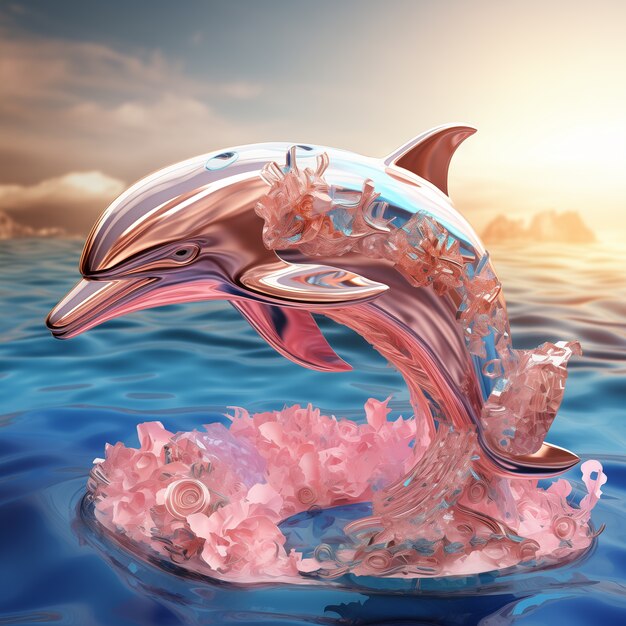Pink River Dolphin Facts

Pink river dolphins, also known as boto or Amazon river dolphins, are found in the rivers of South America.
They are one of the five species of river dolphins in the world.
Pink river dolphins are social animals and often swim in groups called pods.
These dolphins have a pink hue due to the presence of blood vessels near the surface of their skin.
The pink coloration of their skin makes them stand out in the murky waters of the Amazon River.
Pink river dolphins have a flexible neck that allows them to maneuver easily through the dense vegetation of their habitat.
Unlike other dolphin species, pink river dolphins have a rounded head and a long beak.
They are known for their ability to swim silently, making them excellent hunters.
Pink river dolphins primarily feed on fish, but they can also eat crustaceans and small mammals.
These dolphins have sharp teeth that help them catch and hold onto their prey.
Pink river dolphins are highly adaptable and can survive in both freshwater and brackish water environments.
They have a unique way of communicating with each other through a series of clicks, whistles, and body movements.
Female pink river dolphins are known for their strong maternal instincts and are very protective of their calves.
Calves are born a grayish color and develop their pink coloration as they grow older.
Pink river dolphins have a long lifespan, with some individuals living more than 30 years in the wild.
Pink River Dolphin Facts part 2
They are known to be intelligent creatures and have been observed displaying problem-solving skills.
Pink river dolphins have excellent eyesight, which helps them navigate through the murky waters.
These dolphins have a highly developed sense of echolocation, which they use to detect prey and navigate their surroundings.
Pink river dolphins are considered a keystone species in the Amazon ecosystem as they play a crucial role in maintaining the balance of the river’s ecosystem.
They help control the population of their prey species, keeping the ecosystem in check.
Pink river dolphins are threatened by habitat loss due to deforestation, pollution, and dam construction.
They are also targeted by fishermen who consider them pests and competition for fish resources.
Conservation efforts are being made to protect pink river dolphins and their habitats in the Amazon rainforest.
Researchers are studying the behavior and habits of pink river dolphins to gain a better understanding of their needs and ensure their survival.
Pink river dolphins have been a part of local folklore and legends in the Amazon region for centuries.
Some indigenous tribes consider pink river dolphins as sacred animals and believe they possess magical powers.
Pink river dolphins have a gentle and playful nature, often interacting with swimmers and boats.
They are capable of jumping out of the water and performing acrobatic displays.
The pink coloration of their skin is believed to help them camouflage in the twilight hours of the Amazon River.
Pink river dolphins have a layer of blubber that helps them regulate their body temperature in the cold waters.
They are known to be capable of diving to great depths, reaching up to 100 feet.
Pink river dolphins have a unique breathing pattern, taking deep breaths before diving down for extended periods.
These dolphins are highly sensitive to changes in their environment, making them excellent indicators of river health.
The population of pink river dolphins in the wild is currently declining, making them an endangered species.
Efforts are being made to educate local communities about the importance of pink river dolphin conservation.
Pink river dolphins have been a subject of scientific research for their evolutionary adaptations and genetic diversity.
They have been classified as an umbrella species, meaning their protection will also benefit other species in their habitat.
Pink river dolphins have been successfully bred in captivity, contributing to conservation efforts in some areas.
They rely heavily on their sonar abilities to locate prey in the turbid waters of the Amazon River.
Pink river dolphins are known for their curiosity, often approaching boats and interacting with humans.
They have a flexible jaw structure that allows them to catch and devour elusive prey.
Pink river dolphins are known to engage in cooperative hunting, where they work together to corral fish into shallow areas.
These dolphins have a thick layer of blubber that helps insulate them from the cold temperatures of the river.
Pink river dolphins play a vital role in nutrient cycling in the river ecosystem, redistributing nutrients through their waste.
They are considered an indicator species for the overall health of the Amazon River ecosystem.

